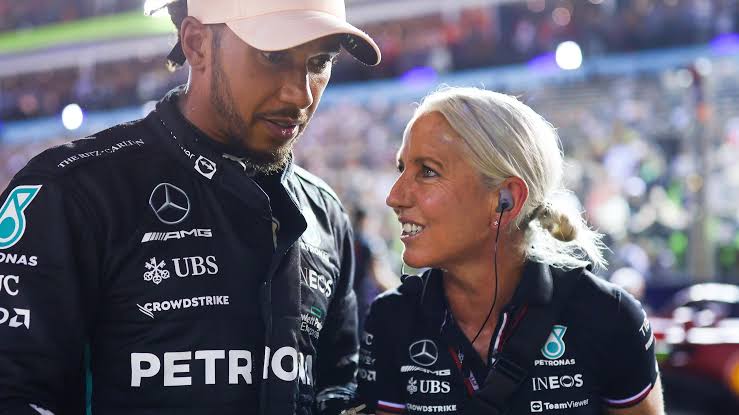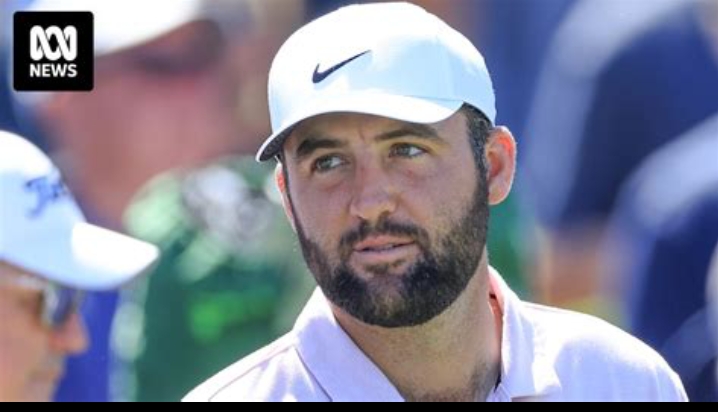BREAKING: The Return of Angela Cullen former Hamilton

Lewis Hamilton’s Former Personal Trainer Reveals Intense Workouts for Racing Drivers
When people think of elite athletes, Formula 1 drivers may not always come to mind as those with the most rigorous physical demands. However, as Angela Cullen, former personal trainer to seven-time F1 world champion Lewis Hamilton, has revealed, these drivers undergo some of the toughest fitness routines in sports. Racing drivers, particularly in Formula 1, are subject to immense physical and mental pressures, and their training reflects the intensity of their profession.
Angela Cullen, who now works with IndyCar driver Marcus Armstrong, recently shed light on the high-intensity training programs that racing drivers follow. In an interview with IndyCar’s official YouTube channel, Cullen shared valuable insights into how driver fitness is maintained and improved throughout a grueling racing season. Despite the misconception that drivers rely solely on their machinery for performance, their training regimens are anything but easy.
According to Cullen, the fitness routines for drivers remain “pretty stable throughout the season” and are designed primarily to enhance endurance and strength. The demands of race days are extreme, and drivers must be in peak physical condition to handle the long hours in the car, the high G-forces during cornering, and the mental concentration required to compete at the highest level.
Cullen explained that drivers like Armstrong engage in two training sessions per day. These sessions include cardiovascular exercises and weight training. “I know he [Armstrong] does an hour cardiovascular and then he does a weight session. Some days he may do two weight sessions, generally doing four hours of training a day specifically for racing,” she shared.
One interesting aspect of driver training is how it ramps up during the Formula 1 summer break. While this period might seem like downtime for the drivers, it is actually an opportunity for them to intensify their workouts. “It’s kind of a reset, but that’s where they can get their big training sessions in because they’ve got time to recover,” Cullen explained. With fewer travel demands, drivers can focus on their physical preparation, pushing their bodies harder while allowing for recovery before the next race weekend.
However, as race weekends approach, drivers adjust their training to ensure they are in peak condition for the competition. Cullen noted that drivers “taper off a little bit” as the weekend nears, resting more to ensure they are fully recovered. This balance between intense training and adequate rest is critical for maintaining the energy needed to perform both mentally and physically during a race weekend.
In a separate interview with Esquire, Lewis Hamilton himself spoke about how his training regimen has evolved over the years. “You definitely adapt always, and you learn you have to just watch your energy. Recovery is huge, a really big part of the process. It’s the whole 360 thing. It’s not just going to the gym. It’s how much you stretch, how much physio you end up doing, what you eat,” Hamilton said. His focus on recovery, nutrition, and physical therapy highlights the holistic approach modern drivers take to maintain their performance.
Hamilton also shared his strategies for winding down after long and demanding days, emphasizing the importance of relaxation and mental well-being. “I listen to a lot of music. I have music set up in my room. I record music. Basically, I write and sing music. Different sorts of R&B. So I record music at night. Often in my evenings, I read. Try to meditate, mostly in the mornings. But I don’t always get to it. And then I’m focused on my sleep,” he added.
Maintaining a strict sleep schedule is also crucial for Hamilton, as it helps him stay sharp throughout the racing season. “Try not to slack on that ever. So there’s a cutoff time when I want to go to bed depending on what time I need to be up the first day,” he said.
In summary, while racing drivers may not face the physical demands of a marathon runner or a heavyweight boxer, their fitness routines are finely tuned to meet the unique challenges of their sport. From endurance training and strength work to recovery and mental preparation, drivers like Lewis Hamilton and Marcus Armstrong are true athletes, dedicated to performing at the highest level in one of the most demanding sports in the world.








 Everyone
Everyone